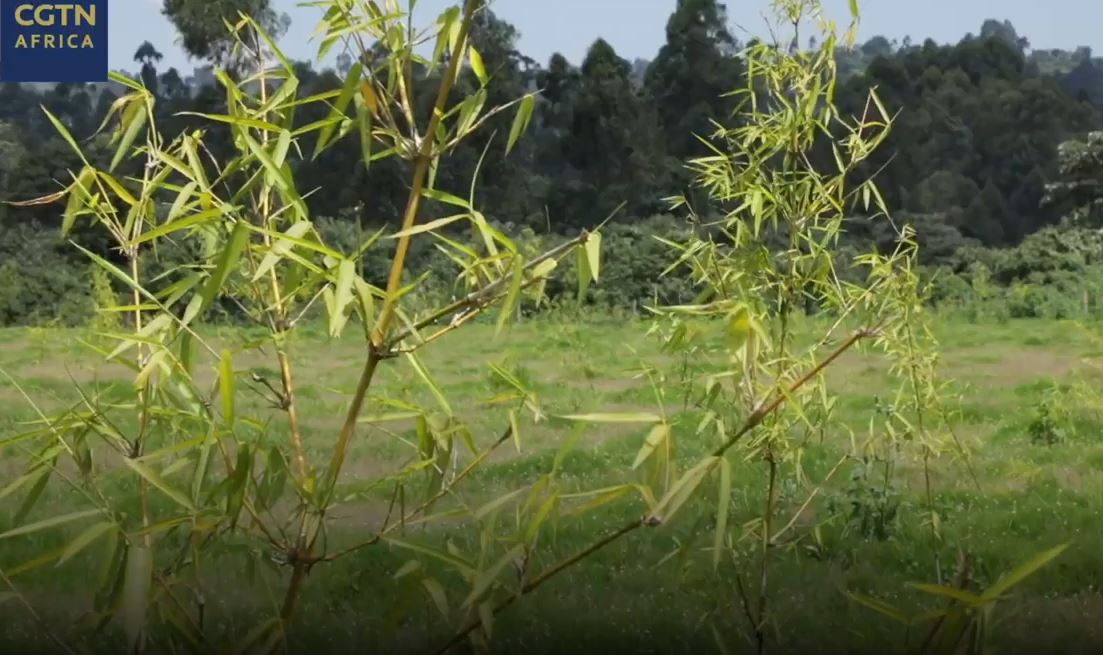
Kenya’s Nandi County turns to bamboo to save threatened wetland

Bamboo has been nicknamed ‘green gold’ in some countries around the world. This is due to its economic benefits, its vast range of uses as well as its contribution to global environmental conservation efforts.
In Kenya, bamboo farming has not reached levels seen in other parts, especially Asia. But this may change soon, as more Kenyans continue to discover its importance.
In Nandi County, authorities have embarked on a bamboo planting project aimed at bringing the plant to the fore of conservation efforts and benefiting residents financially.
Deep in the county lies Kibirong wetland, a large tract of land spanning 1,060 acres, but which has over the years suffered degradation mainly due to human activity.
The wetland provided habitat for wildlife and indigenous plants, but now only remains with a tiny fraction of these.
In efforts to restore the glory of the wetland, Nandi County planted bamboo trees, a conscious decision that authorities hope will not only replenish the plant life of the wetland, but also attract the wildlife that roamed and flew there.
“We were looking at what is the alternative for the vegetation that has been removed from there so that we can have it regenerate,” said Solomon Mang’ira, Chief Officer, Lands, Environment, Natural Resources and Climate Change, Nandi County. “And one of the plants that we have seen and has been researched on, that you find even in the mountain and even the wetlands is the bamboo tree. There are so many types of Bamboo. There are many species. Scientific names, you can find them.
But you know, we realized that there is need for us to have something that is going to be an alternative not only for the protection of the environment but also for economic benefits for the people,” he added.
Bamboo trees are ideal for environmental conservation because they are fast-growing, their roots are good soil holders, and they regenerate upon maturity, allowing them to be harvested every year of their lifespan.

Authorities also hope the bamboo plants can be deployed beyond the wetland, further into other areas that also need conservation efforts.
“Another aim of this bamboo project is to protect the escarpments. So, we will be producing seedlings in large quantities here so that it will be used for conservation and protection in the escarpments as well as in other wetlands,” said James Kurgat, Environment Inspector Nandi County.
Mang’ira noted that the bamboo trees would lift the community in various ways, including financially from the sales of the plants upon maturity.
He added that the decision to deploy bamboo trees was a conscious one, influenced by the plants’ success in countries such as China.
The Chief Officer said Nandi County would look to cooperate with such countries to find markets for harvested bamboo trees upon maturity.
“When we talk of countries like China… in one way or the other, they also saw that we have so much potential that we can even come in collaboration with them because we are talking about even having a market in Asia,” he said. “So already, we are seeing something that we are bringing that is not…we are not inventing any wheel. We are just fitting into what people have invented. So, if the Chinese are using it, and you know, if it is something that is an alternative for the other wood, then so be it. But we are saying that we want to be structured in how we do it.”
Other than environmental conservation, bamboo can be used for other purposes, including construction, furniture making, fencing, making utensils, straws and even bicycles.
For now, as the trees grow, residents of Nandi County can take pride in this new horizon that authorities hope will not only help conserve the environment, but will also lift people out of poverty.






